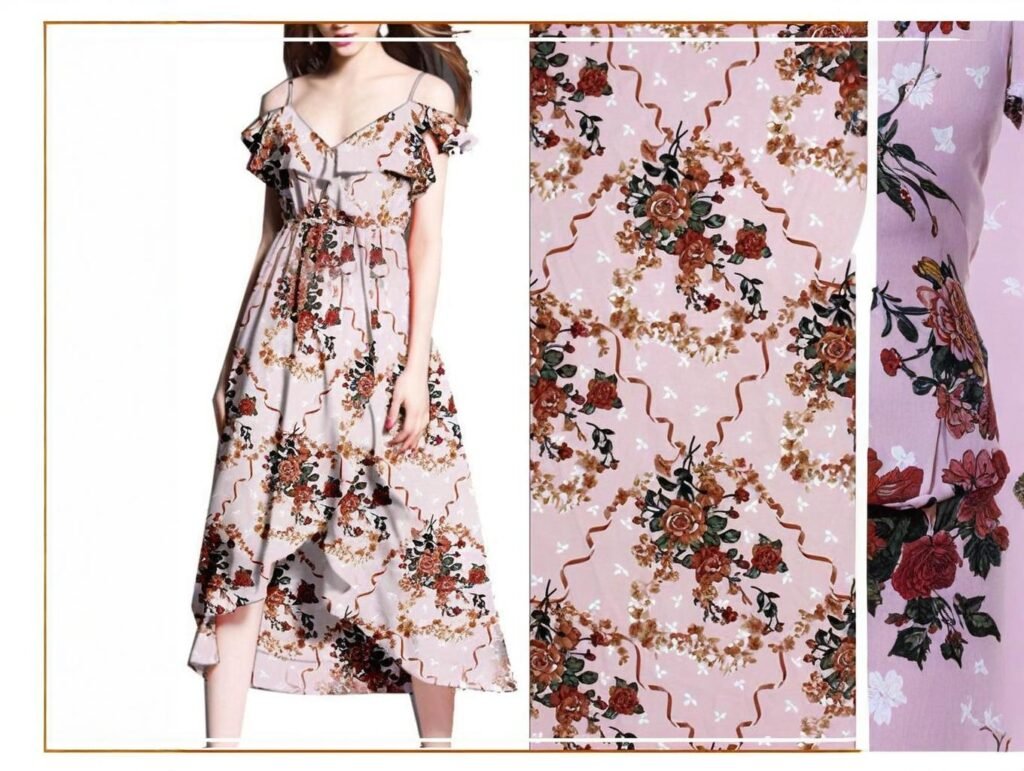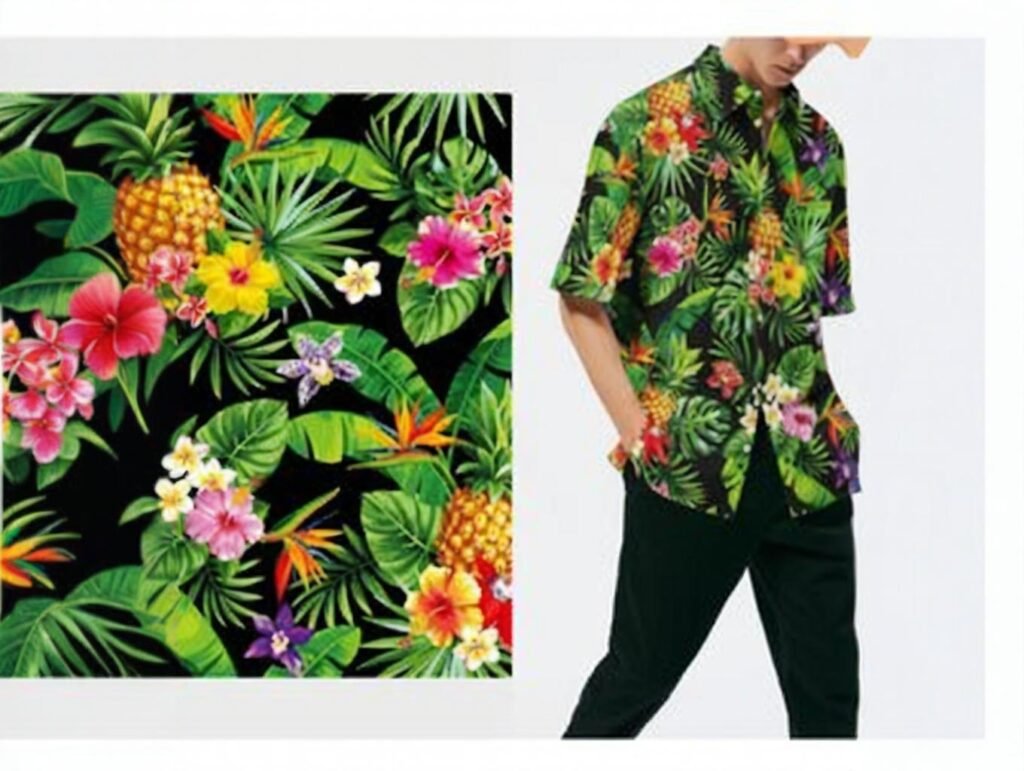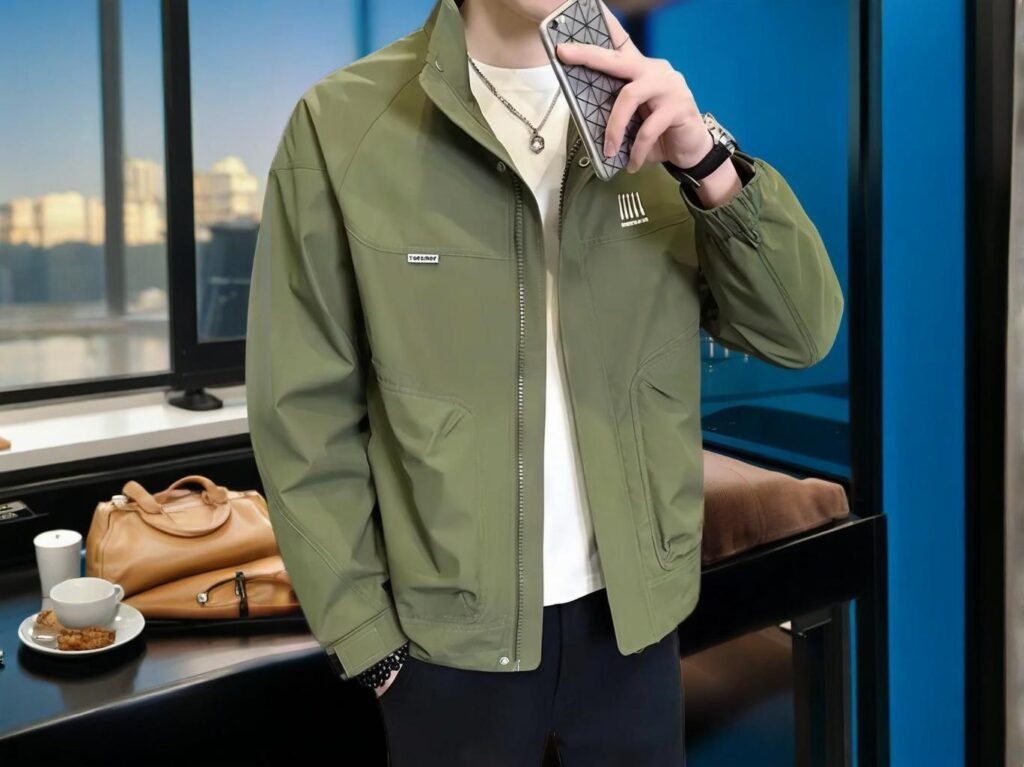In the ever-competitive world of fashion, choosing the right fabric is more than just a creative decision—it’s a strategic one. For private label brands, the choice between polyester and cotton can significantly impact not only the final product but also pricing, sustainability messaging, and consumer loyalty. While both materials have long histories and loyal followings, their performance in modern apparel categories—from activewear to everyday basics—varies widely.
So which fabric is better suited for your brand’s next collection: polyester or cotton?
Cotton offers breathability, softness, and natural appeal, making it ideal for comfort-focused garments, while polyester delivers superior durability, wrinkle resistance, and moisture-wicking features suited for performance wear. The best choice depends on your product category, target audience, and sustainability priorities.
At SzoneierFabrics, we’ve worked with hundreds of private label clients across different markets and garment types—from luxury lounge sets to high-performance gym wear. Each one faced the polyester-vs-cotton dilemma, and the right answer was never “one-size-fits-all.” One startup brand based in California saw a 30% return rate drop after switching to high-GSM cotton for their premium tees, while a European activewear label cut their production costs by 22% by optimizing their polyester blend ratio.
Let’s unravel the complex tradeoffs, so your brand doesn’t just make garments—it makes the right fabric decisions.
What Are the Key Differences Between Polyester and Cotton Fabrics?

Cotton is a natural fiber known for its breathability and softness, while polyester is a synthetic fiber prized for its durability and moisture-wicking properties. Their differences lie in origin, performance, appearance, and sustainability.
Fiber Origins and Processing
- Cotton: Grown from the cotton plant; processed with spinning and sometimes combing; naturally biodegradable.
- Polyester: Petroleum-based polymer created through chemical synthesis; non-biodegradable; can be recycled.
| Feature | Cotton | Polyester |
|---|---|---|
| Origin | Natural plant fiber | Synthetic (petroleum-based) |
| Feel | Soft, breathable | Smooth, less breathable |
| Durability | Moderate | High |
| Shrinkage | Higher (if untreated) | Minimal |
| Cost per yard (avg.) | $3–$7 (varies by grade) | $1–$4 |
| Sustainability | Biodegradable, water-intensive | Energy-intensive, recyclable |
Appearance and Touch
- Cotton has a matte, organic texture that softens over time.
- Polyester appears slightly shinier, and can be engineered for stretch, sheen, or texture.
Common Misconceptions
- Many assume cotton is always better for skin, but modern polyester blends (like poly-cotton or recycled PET) are engineered for hypoallergenic and breathable properties.
- Polyester isn’t just for cheap fashion—it’s widely used in luxury performance brands like Lululemon, Nike, and Gymshark.
Case Insight
A Korean fashion startup manufacturing outerwear partnered with SzoneierFabrics to compare cotton twill and polyester microfibers. While cotton offered a more premium “natural” aesthetic, it lacked the windproof qualities essential for their streetwear line. Their hybrid solution—a cotton-polyester bonded shell—sold out in 10 days after launch.
Which Fabric Offers Better Durability for Private Label Clothing Lines?
Polyester offers superior durability, especially for items exposed to repeated washing, stretching, or environmental stress, while cotton, though softer, is more prone to wear and tear over time.
Tensile Strength & Abrasion Resistance
- Polyester has nearly double the tensile strength of cotton. It’s resistant to pilling, tears, and UV exposure.
- Cotton fibers, although comfortable, break down faster—particularly under repeated friction and moisture.
Performance by Garment Category
| Garment Type | Recommended Fabric | Reason |
|---|---|---|
| T-Shirts | Cotton or Blend | Comfort and skin contact |
| Leggings | Polyester or Nylon | Stretch and moisture management |
| Uniforms | Polyester | Fade resistance, color retention |
| Casual Shirts | Cotton | Softness, breathability |
| Sportswear | Polyester or Blend | Durability and wicking |
| Babywear | 100% Cotton | Skin sensitivity, natural fiber |
Real-World Data
A study published in Textile Research Journal (2022) compared 200 wash cycles of 100% cotton vs 100% polyester tees:
- Cotton showed 40% fiber loss and faded dye after 100 cycles.
- Polyester retained 85% integrity even after 200 cycles.
Brand Insight
One of our European private label customers producing industrial workwear found polyester blends extended product lifespan by 60%, reducing long-term restocking costs.
Sourcing Tip
Polyester woven with nylon or treated with special coatings (like PU or silicone) can increase abrasion resistance further—ideal for workwear, outerwear, or tactical apparel.
How Do Polyester and Cotton Compare in Terms of Comfort and Wearability?

Cotton generally feels softer and more breathable, making it ideal for comfort-focused apparel, while polyester offers stretch, moisture management, and shape retention—especially in performance and activewear categories.
Skin Sensation and Temperature Regulation
- Cotton: Soft to the touch, highly breathable, and naturally hypoallergenic. It allows air circulation, making it ideal for warm-weather and next-to-skin clothing.
- Polyester: Can feel less breathable in its raw form, but modern technologies like mesh knits, microfibers, or moisture-wicking finishes significantly improve wearability.
| Comfort Factor | Cotton | Polyester |
|---|---|---|
| Breathability | Excellent | Moderate (can be engineered) |
| Moisture Management | Absorbs moisture | Wicks moisture |
| Odor Resistance | Prone to odor buildup | Better at odor control (treated) |
| Heat Retention | Low | Medium to high |
| Texture Against Skin | Naturally soft | Depends on finish |
Real Usage Scenarios
- For loungewear, cotton is often the winner due to its natural comfort.
- In high-sweat environments like gyms or outdoor sports, polyester dominates due to its dry-feel performance and anti-wrinkle structure.
Consumer Preference Trends
A 2024 Nielsen survey of U.S. consumers found that:
- 63% preferred cotton for everyday wear (due to softness and breathability)
- 72% chose polyester or poly blends for sportswear (due to performance and drying speed)
Case Story
A U.S. women’s athleisure brand initially used 100% cotton jersey for their yoga tops. Customer reviews frequently mentioned “soaking through too quickly.” After switching to a brushed polyester-spandex blend with a moisture-wicking finish (developed by SzoneierFabrics), the same product line saw a 4.7-star average and repeat customer rate increase of 36%.
Is Cotton or Polyester More Cost-Effective for Bulk Apparel Production?
Polyester is typically more cost-effective for bulk manufacturing due to lower raw material costs, fewer processing steps, and higher yield per kilogram, while cotton can have higher upfront and processing costs, especially organic or combed varieties.
Cost Per Yard and Production Efficiency
- Raw Cost: Polyester is manufactured at industrial scale using petroleum derivatives, resulting in predictable and scalable pricing. Cotton prices fluctuate with agricultural variables.
- Processing: Cotton often requires pre-shrinking, combing, and extensive finishing to maintain quality, especially for higher-end garments.
- Waste Yield: Polyester fabrics have a tighter weave and often result in lower cutting waste in mass production setups.
| Production Element | Cotton (avg) | Polyester (avg) |
|---|---|---|
| Material Cost per Yard | $3.00 – $7.00 | $1.20 – $4.00 |
| Dyeing Cost | Higher (absorbs more) | Lower (less absorption) |
| Shrinkage Risk | Higher | Minimal |
| Energy Use in Weaving | Medium | Lower (faster looms) |
| MOQ Sensitivity | Higher | Lower |
Long-Term Cost Factors
- Returns & Defects: Cotton fabrics may shrink or lose color if not pre-treated, leading to post-sale issues.
- Warehousing: Polyester resists mold and moisture better, reducing storage risks in humid regions.
Brand Comparison Insight
A startup in Australia launched a line of eco-printed beach shirts. After one season using lightweight cotton poplin, they faced high returns due to shape loss after washing. In the second season, they pivoted to polyester-viscose blend and reduced customer complaints by 78%, while cutting unit costs by 18%.
Financial Decision Matrix
| Criteria | Choose Cotton If… | Choose Polyester If… |
|---|---|---|
| Brand Positioning | Premium, eco-conscious | Value-focused, performance-driven |
| Target Market | Comfort-first consumers | Techwear or activewear audiences |
| Budget per SKU | Flexible budget | Cost-sensitive production |
| Product Category | Casualwear, babywear | Gymwear, uniforms, outerwear |
What Are the Sustainability Considerations of Cotton Versus Polyester?

Cotton is biodegradable and natural but often water-intensive and pesticide-dependent, while polyester has a higher carbon footprint but offers recyclability and lower water use. The more sustainable choice depends on sourcing methods and lifecycle analysis.
Environmental Impact Breakdown
| Factor | Cotton | Polyester |
|---|---|---|
| Source | Renewable (plant-based) | Non-renewable (petroleum-based) |
| Biodegradability | Yes (within 5–6 months) | No (can take 20–200 years) |
| Water Usage (per kg) | 10,000–20,000 liters | <100 liters |
| CO₂ Emissions (per kg) | 1.8–2.5 kg | 5.5+ kg |
| Recyclability | Limited (chemical recycling only) | Yes (PET recycling systems) |
Organic vs Conventional Cotton
- Organic cotton eliminates synthetic pesticides and fertilizers, significantly reducing water contamination and soil degradation.
- However, yields are lower and prices higher. For brands with a sustainability narrative, organic cotton can boost brand value.
Recycled Polyester (rPET)
- Made from post-consumer plastic bottles.
- Produces 30–50% less CO₂ than virgin polyester.
- Popular among eco-active brands like Patagonia, Adidas, and H&M Conscious Collection.
| Fabric Type | Eco Rating (1–5) | Typical Use Cases |
|---|---|---|
| Conventional Cotton | 2 | Low-cost tees, underwear |
| Organic Cotton | 4 | Eco brands, babywear, premium basics |
| Virgin Polyester | 2 | Fast fashion, uniforms, linings |
| Recycled Polyester | 4 | Sustainable activewear, bags, sportswear |
Life Cycle Assessment (LCA) Considerations
A 2023 Textile Exchange report found:
- Cotton uses 24% of the world’s insecticides on 2.5% of the global cropland.
- Polyester accounts for 60% of clothing materials worldwide and is responsible for 35% of microplastic pollution in oceans.
SzoneierFabrics Insight
We helped a Scandinavian streetwear brand shift 70% of their polyester SKUs to GRS-certified rPET fabric. The move reduced their annual carbon output by 19 tons and boosted their marketing ROI with strong sustainability messaging.
How Do Printing and Dyeing Perform on Cotton and Polyester Fabrics?
Cotton excels in absorbing dyes, making it ideal for rich, natural tones and pigment printing, while polyester requires special dispersive dyes or sublimation printing but yields vibrant, sharp graphics.
Dye Absorption and Fastness
| Property | Cotton | Polyester |
|---|---|---|
| Dye Type | Reactive, pigment, vat | Disperse, sublimation |
| Color Vibrancy | Moderate to high (with reactive) | High (sublimation or heat-transfer) |
| Print Sharpness | Moderate | Excellent |
| Wash Fastness | Medium | High |
| Eco-Dye Compatibility | Yes | Limited (needs chemicals) |
Suitable Printing Methods by Fabric
| Printing Method | Cotton Suitability | Polyester Suitability | Notes |
|---|---|---|---|
| Screen Printing | Excellent | Good (with right inks) | Cost-effective for large batches |
| Digital Pigment | Excellent | Moderate | Good for short runs and detail |
| Sublimation | Not suitable | Excellent | Vivid colors, requires high heat |
| Discharge Printing | Excellent | Not suitable | Creates soft prints on dark cotton |
Use Case: Branding and Customization
- Cotton is preferred for eco-conscious brands using water-based or natural pigment dyes.
- Polyester is favored for sportswear or fashion pieces requiring photo-realistic prints or fade-resistant designs.
Brand Example
A Canadian yoga apparel company working with us required vibrant, durable all-over prints on leggings. Cotton failed to deliver the intensity and sharpness, even with reactive dyes. Transitioning to sublimation on 90% polyester/10% spandex yielded stunning results—sharp detail, 30% faster drying time, and zero fading after 30 washes.
Pro Tip from SzoneierFabrics
Sublimation is best for white or light-colored polyester. For dark polyester, use screen printing with plastisol inks or heat-transfer vinyl for best results.
Which Fabric Is Better for Different Apparel Categories (e.g., T-Shirts, Sportswear, Workwear)?

The ideal fabric depends on the garment’s use case—cotton is best for comfort-centric items like T-shirts and babywear, while polyester is favored for technical garments such as sportswear and uniforms due to its performance and durability.
Category-Based Fabric Recommendations
| Apparel Category | Preferred Fabric | Why It Works |
|---|---|---|
| T-Shirts (Everyday) | 100% Cotton or Cotton Blend | Breathable, soft, consumer-trusted |
| T-Shirts (Promotional) | 100% Polyester | Cost-effective, holds shape, vibrant prints |
| Activewear | Polyester/Spandex | Moisture-wicking, stretch recovery |
| Babywear | Organic Cotton | Hypoallergenic, natural, soft |
| Workwear | Polyester/Cotton Blend | Durable, colorfast, wrinkle-resistant |
| Dress Shirts | Cotton or Poly-Cotton | Cotton = luxury feel; Blends = low maintenance |
| Uniforms | 100% Polyester or Blends | Wash-durable, stain-resistant, easy care |
| Yoga/Compression Gear | Polyester/Elastane Blend | Elastic, breathable, print-friendly |
| Homewear/Pajamas | 100% Cotton | Comfort, breathability, insulation |
Industry Trends by Product Type
- Premium brands often stick to combed cotton or cotton-modal blends for consumer appeal and softness.
- Fast fashion labels lean into polyester for its cost-efficiency and rapid scalability.
- Eco brands increasingly use recycled polyester or organic cotton depending on their product mission.
Case Example: Hybrid Fabrics
A German label producing business-casual shirts tested a 65/35 polyester-cotton blend in collaboration with SzoneierFabrics. The result: reduced wrinkling by 80%, extended garment life by 25%, and an increase in customer satisfaction score from 3.9 to 4.6.
Comfort vs Performance Matrix
| Performance Priority | Recommended Fabric |
|---|---|
| Ultimate Comfort | Organic or combed cotton |
| Moisture Management | Polyester blends |
| Stretch and Flexibility | Polyester/Spandex |
| Shape Retention | Polyester |
| Natural Look & Feel | Cotton |
| Durability | Polyester or Blends |
Do Leading Private Label Brands Prefer Cotton, Polyester, or Blends—and Why?
Leading private label brands increasingly choose blends to balance performance, cost, and comfort. Cotton remains dominant in comfort-focused categories, while polyester or poly-blends are rising in sportswear, workwear, and digitally printed collections.
Brand Strategies by Fabric Choice
| Brand Type | Typical Fabric Strategy |
|---|---|
| Luxury / Boutique Brands | Premium cotton, organic blends |
| Fitness / Sportswear Brands | High-tech polyester, spandex, rPET |
| Workwear / Industrial Labels | Polyester/cotton blends |
| Eco-Lifestyle Brands | Organic cotton, bamboo, recycled polyester |
| Fast Fashion Houses | Cost-optimized polyester, occasional blends |
Real-World Brand Examples
- Everlane emphasizes sustainably farmed cotton and publishes its environmental impact.
- Patagonia uses recycled polyester in 90%+ of its garments.
- ASOS Design varies by collection, mixing cotton for casuals and polyester for prints.
- Gymshark relies heavily on polyester-spandex for its compression-fit gym gear.
Blend Popularity Growth
According to a 2024 Textile Intelligence industry report:
- Poly-cotton blends (65/35 or 50/50) have become the fastest-growing material group in private label programs.
- 71% of surveyed private label designers preferred blends for multi-seasonal capsule lines.
Long-Term Thinking: Lifecycle + Branding
- Cotton communicates eco values, softness, and authenticity.
- Polyester conveys tech performance, innovation, and easy care.
- Blends allow brands to tailor fabric performance for niche customer needs.
There’s no one-size-fits-all when it comes to fabric decisions for private label brands. Instead, each apparel type, customer base, and brand identity should dictate your material choice. Cotton brings unmatched softness and a natural touch. Polyester delivers innovation and endurance. Blends strike the perfect middle ground. The smartest brands don’t choose between cotton and polyester—they use both, strategically.
At SzoneierFabrics, we help you find, customize, and produce the ideal fabric for your collection—from high-thread-count cotton to high-performance polyester knits and eco-conscious blends. With low MOQ, fast sampling, and 100% quality assurance, we’re here to turn your fabric strategy into competitive product success.
Contact us today to get a free consultation or custom quote for your private label fabric sourcing needs.

